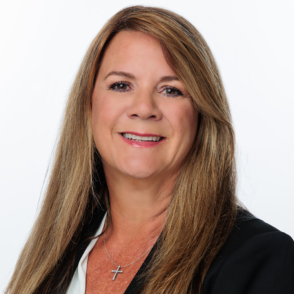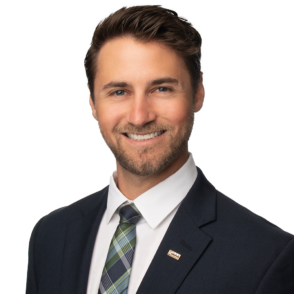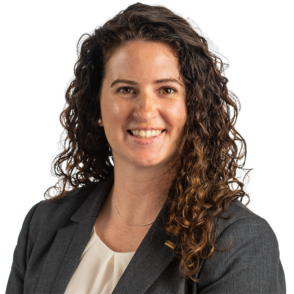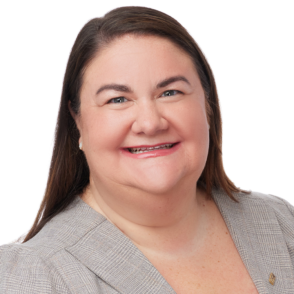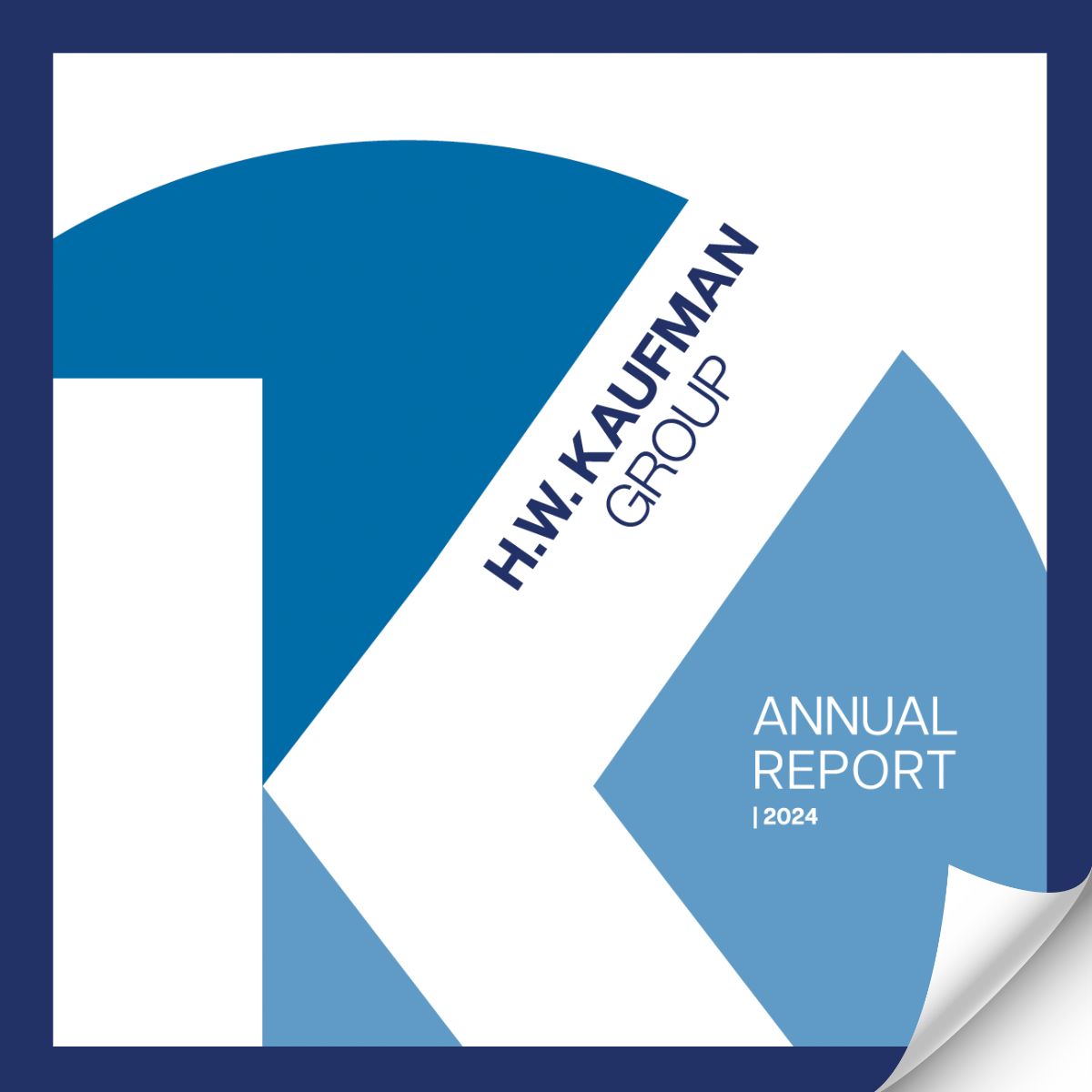Despite the continued “flight toward profitability” for most carriers, moderation in both rate and capacity is occurring in many insurance sectors. Most rates are rising, but the level of increases is slowing. Capacity is generally available but often requires creativity. On the Casualty side, some classes remain stressed while carriers are competing for business in others. These and other trends are why the next several months might be a time of transition for the industry.
With that in mind, here are several topics we are following as 2024 approaches:
- Growth and opportunities in Excess & Surplus
- The proliferation and industry expectations for new technologies
- Atypical weather patterns that influence the potential for costly, catastrophic events
- A moderation of the reinsurance space
- A return of post-COVID behavior in the Liability sector
Growth and opportunities in Excess & Surplus
Client demand and available capacity is growing the Excess and Surplus (E&S) space, which by all accounts should lead to a robust 2024. That growth is being fueled by high demand for new technologies, specialized insurance products, and solutions. The standard equation within the insurance market that predicts profitability is that losses plus commissions plus other expenses must equal less than 100. That has not been the case for many carriers in recent years.
For example, the sector had about a 96 percent combined ratio in 2022, compared with essentially break-even results in 2021, according to a Fitch Ratings report released in early October.
On the carrier side, this growth is being driven by natural catastrophes with unusual weather patterns, COVID-related claims and both social and economic inflation. Demand is also influenced by greater flexibility in E&S markets as highlighted by freedom of rate and form as compared to the admitted marketplace. This status gives E&S carriers the ability to adapt to change more rapidly while also providing the freedom to charge appropriate rates for customized terms and conditions.
Burns & Wilcox is a trusted resource within E&S—delivering flexibility and generating quick responses for brokers and agents, while offering solutions spanning both Personal and Commercial lines within both binding and brokerage platforms.
The proliferation and industry expectations for new technologies
Access to new technology is a critical part of the insurance sector as it benefits clients and carriers. Specifically, third-party data like satellite imagery and crime scores help provide a more accurate assessment of a first-party property. Satellite imagery includes street view data from Google Maps and other sources. Crime scores are available from a variety of places ranging from police reports to conviction rates. These and other data points each positively impact underwriting by providing additional criteria by which terms can be provided more accurately.
Carriers also need to develop their Application Programming Interface (API) strategy and stay on top of artificial intelligence (AI) trends. For example, self-driving vehicles will create emerging exposures that will need to be addressed. Additional technologies like weather pattern monitoring tools and other data from aggregation and risk assessment companies like Verisk are changing how submissions are completed and rates are determined.
At Burns & Wilcox, we are doing our part. We have partnered with Salesforce to help automate each step of the production lifecycle from submission through both issuance and post-issuance. Burns & Wilcox is also developing AI models to improve the customer experience, with a focus on speed, quality, and submission turnaround.
Atypical weather patterns that influence the potential for costly, catastrophic events
It is not just the fact that catastrophic storms are increasing in frequency, but that they are behaving differently than in past years. At this point, it is a recognized fact that tornado patterns are migrating eastward toward states like Tennessee, Kentucky, and Arkansas. Scientific American indicated in a May 2023 article that large tornado outbreaks – defined by numerous tornadoes in the same region touching down on the same day – have increased over the last three decades, while confirming the eastward trend.
As we know, wildfires in the western U.S. and deep freezes in the south have increased as well. Extreme hot and cold temperatures are expanding in regions across the U.S. with many areas experiencing 80 to 90-degree swings in temperatures during the course of a calendar year. For example, parts of Texas recorded low temperatures in the low to mid-20s in December 2022. Meanwhile, the state’s Big Bend region experienced 78 days of 100-degree-plus temperatures earlier in 2022. This year, the Rio Grande Village in Big Bend nearly broke the hottest day in Texas history. Parts of the Pacific Northwest have experienced similar temperature swings, which will lead to more claims in both the summer and winter.
A moderation of the reinsurance space
Speakers at the 65th Reinsurance Rendez-Vous de Septembre (RVS) in Monaco offered many positive comments for the reinsurance sector. That market’s hardness has been tamped a bit compared to this time one year ago. Additionally, the headline in an August 2023 Insurance Journal article about the status of the reinsurance market was telling: “Conditions Are Challenging, Claims Are Elevated, but Reinsurers’ Profits Return.”
That article highlighted an A.M. Best report that stated how reinsurers have largely aligned their risk portfolios to promote profitability over the last few years. To further stress this trend, the Insurance Journal article, referenced above, indicated that four main European reinsurers — Hannover Re, Munich Re, SCOR and Swiss Re — have reported strong results with returns on capital significantly surpassing their cost of capital. Rate increases have helped improve the health of the reinsurance market.
We anticipate this means that reinsurers will be more willing to consider property and catastrophe risks in the months ahead.
A return of post-COVID behavior in the liability sector
We would characterize the Liability sector as having experienced some recent moderation. However, there is a growing concern over a rising number of claims and higher court awards in commercial auto, and the determination by interested parties to prove negligence with auto claims. A related trend is the fact that courts are still catching up to pre-COVID docket volume. This has increased the potential for further rate increases in liability heading into 2024.
It’s a bit of a “perfect storm” with continued social and economic inflation caused by such trends as third-party litigation funding, a well-organized Plaintiff’s Bar, overly sympathetic juries and society’s general need for an accident scapegoat.
RATE
Surplus lines’ premiums increased by double-digit percentages for the fifth year in a row as reported by A.M. Best in its September report. While it may be a repetitive theme from past quarters, we do not see that trend changing in the near future. A.M. Best indicates that 2022 witnessed an increase of 19.2 percent in rate for a total market cap of just under $100 billion.
That market cap is expected to further increase to $120 billion in 2023, based on predictions shared at such recent industry conferences as the Wholesale and Specialty Insurance Association (WSIA) and the Insurance Leadership Forum, which is hosted by the Council of Insurance Agents and Brokers (CIAB).
This should come as no surprise since the general trends for driving rates have not changed. Unpredictable weather with catastrophic events are not lessening in numbers. Social inflation, marked by excessive jury verdicts, continues to be the norm while financial inflation remains persistent. The bottom line is that rate increase moderation seems to have begun.
CAPACITY
Outside of property located in areas at high risk for large, catastrophic natural disasters, capacity is largely a non-issue within the sector, even for traditional carriers. Simply put, most insured clients who need insurance can get it, although many of those policies come with high rates, restrictive terms and conditions, and lower limits necessitating the need to layer policies. In fact, carriers have approved shorter limits for many policies over the last couple of years as a way to get a better handle on capacity. Clients requiring higher limits may need to place multiple policies or layer more than one option to reach that intended limit level.
However, the most sought-after capacity is often only made available to trusted brokers and agents based on strong relationships and historical performance such as Burns & Wilcox. Carriers remain very selective with the capacity in the highest demand.
There is also a segment of the Property market where capacity is highly restricted, and at best will require multiple carriers to provide the necessary limit. Despite a relatively tame storm season through late October, capacity remains challenging for any property near the coasts and areas subject to a high risk of wildfires or convective storms.
TERMS & CONDITIONS (T&C)
We know that terms and conditions within a policy’s fine print have become more restrictive in recent years, but there is a sense in the marketplace that an equilibrium is being reached. It is likely we have reached a point where terms and conditions will not be scaled back further unless something unforeseeable occurs (i.e. another pandemic, significant geopolitical or financial instability on a global level, etc.). Still, some emerging exposures like cyber could see continued language updates since those sectors are still relatively new.
As we have witnessed in the past few years, carriers are requiring very specific wording with their policies. Some of this wording may be new to clients during the renewal process, so brokers and agents will be relied upon to help identify any challenges and provide guidance on next steps. While the number of changes to current policies may decrease, those policies aren’t likely to become less restrictive anytime soon.
Contributor: Paul G. Smith, Corporate Senior Vice President, H.W. Kaufman Group, New York, New York
Q4 FORECAST BY LOB
Our industry-leading subject matter experts dissected the marketplace and provided insights on the Burns & Wilcox P&C Market Outlook: Q4 2023 webinar, hosted October 12.
Click here to view the complete webinar.
Below, our experts provide further guidance, delving deeper into specific areas with advice and outlook.
PERSONAL INSURANCE (US)
There is a much more hopeful and optimistic tone in the Personal space compared to this time a year ago with moderation in rates and inflation. Yet changing deductibles and coverage limitations are still very fluid.
These factors require producers to be creative with their insured clients. Examples include the use of specialty products such as wind deductible buybacks and scheduling more frequent meetings with those insured clients to discuss likely outcomes. One way to provide solutions more effectively for clients is to engage them with underwriters who in turn are likely to see their interest as a commitment to getting them high-quality accurate submissions.
The good news for brokers and agents is that capacity will be less of an issue when working with Burns & Wilcox. Our firm has access to two new exclusive property products for both coastal and non-coastal risks. Additionally, we have carrier partners that have given Burns & Wilcox aggressive growth goals for 2024. In other words, quotes for qualified insured clients will be plentiful. Best of all, brokers and agents can trust that Burns & Wilcox closely vets all partners for quality and reliability.
Leading U.S. commercial insurers are continuing to benefit from growth in their net written premiums through both rate increases and increases in exposure as well as investment income. While higher interest rates have generally fueled improved investment returns for insurers, they are also raising the cost of capital and required returns for shareholders and debtholders.
Contributor: Anella Niewenhous, Associate Vice President, Regional Practice Group Leader, Personal Insurance, Burns & Wilcox, Morehead City, North Carolina
COMMERCIAL INSURANCE (US)
Leading U.S. commercial insurers are continuing to benefit from growth in their net written premiums through both rate increases and increases in exposure as well as investment income. While higher interest rates have generally fueled improved investment returns for insurers, they are also raising the cost of capital and required returns for shareholders and debtholders.
Property:
Submission counts are high, so full submissions are critical to receiving policy consideration. Brokers and agents should follow up on submissions with a phone call to ensure it is complete and meets the increased needs of our carriers and not expect formal quotes more than two weeks prior to expiration. Clients should start renewal discussions with Burns & Wilcox well in advance of expirations so that we can assist with providing guidance when completing their submissions.
Outside of the submissions challenge, a consistent theme is that underwriters are making it clear that values must move. There is a desire for Insured to Values (ITVs) to be higher and it is a message that all brokers and agents should heed. A $110 square foot building cost seems to be average these days with documented reporting by trusted third parties often required. Producers should know that underwriters will have a value they want to see. It is up to those brokers and agents to help their insured clients get close to that ITV. If not, it is unlikely that a quote will even be provided.
Varying deductibles are becoming increasingly ever-present for everything from All Other Peril (AOP) and wind, to wildfire and water damage, and more. Between the rising number of deductibles and rate increases, there is often a building block approach to securing renewals both now and in the future. While many rates are rising by double digits, the good news is that 20 percent-plus rate increases might be more unlikely in 2024. Holding these conversations with insured clients in advance can help prepare them for these challenges so informed
decisions can be made.
As we have mentioned in past reports, the expansion of CAT-related claims within property continues. Much of northern Texas, Colorado, and other Midwestern states now require 3-5 percent deductibles because of the growing impact of wind and hailstorms in those areas. A few years ago, there were essentially no such deductibles in those states. Meanwhile, parts of southern Florida are now seeing wind and hail deductibles of as much as 15 percent. This proves what we have been saying recently – every state truly is a CAT state.
Contributor: Scott Lane, Associate Managing Director, Broker, Property, Burns & Wilcox Brokerage, Atlanta, Georgia
Casualty:
One of the main themes coming out of the recent CIAB Conference was that the casualty industry has witnessed a significant correction of pricing in U.S. casualty lines since the market turned in 2019. Insurance Insider Editor-at-Large McNestrie wrote in one of the publication’s newsletters that he talked to a professional who “said that his firm had put close to 150 percent compound rate increases through their excess casualty book over that period of time.”
Despite some angst, the Casualty market has experienced exponential growth in 2023 with carriers encouraged to write business where they are confident in profitability. There is also a push for writing casualty business where property is involved. Many casualty sectors are experiencing upticks in demand, especially on the product side, within manufacturing, commercial construction, environmental and others.
On the other hand, some casualty segments will continue to see rising rates and limited availability. Carriers remain concerned about the growing number of claims in the habitational space. A primary reason is the rising number of claims for assault and battery, particularly in multi-family complexes where owners may not have created the necessary levels of security infrastructure (i.e., security cameras and more) needed to support a safe environment.
Additionally, some carriers are avoiding apartment buildings and condominium complexes in higher-risk communities. One factor is the presence of mold in many of these multi-family buildings, which can cause severe health problems for residents. The Surfside condominium collapse near Miami in June 2021 continues to weigh on the habitational market as well, especially for properties bordering the ocean where high winds, storms and salt water can have an adverse long-term impact on structural integrity.
Besides habitational, liquor liability, transportation and new residential construction also remain in a hard market. Expect shorter excess limit offerings often capped at $2 million in those sectors along with stricter insurance requirements from builders. Higher excess limits of $10 million+ are generally being required which forces brokers and agents to build multi-policy excess towers. The good news is there is more opportunity even as excess carriers become more conservative.
Keep in mind with the proliferation of information now available to underwriters, data can be used to both help and hurt a submission, especially in these challenging sectors.
Contributor: Jordan Muckway, Manager, Commercial Insurance, Burns & Wilcox, Dallas/Ft. Worth, Texas
PROFESSIONAL LIABILITY (US)
As we move into 2024 a lot of the same concerns remain: inflation, employee retention, cyber security, and new technology.
Inflation continues to weigh on the U.S. economy as we see continued supply chain and labor disruption, political unrest, and interest rates still on the rise. These factors can have serious consequences for businesses and their financial performance. The need for Directors and Officers (D&O) and Employment Practices Liability (EPL) Insurance is more important than ever. The D&O market has softened over the last year, and we have several new carriers adding capacity. Most carriers are offering flat renewals unless there is a significant change in exposure. Directors and officers also have to consider the changing landscape of Environmental, Social, and Governance (ESG); Diversity, Equity, and Inclusion (DEI); and regulatory changes with regard to Cyber and the collection of Biometric Information. Working with a Burns & Wilcox broker can help ensure the client has a policy to address all exposures.
Capacity is at an all-time high for the Errors and Omissions (E&O) marketplace and rates are relatively stable. Carriers are coming out with new ways to combine several lines of coverage with E&O, such as General Liability and Cyber. Challenges around recruitment, hiring and retention are one of the top five concerns for small to mid-size businesses. We have seen an increase in submissions for both medical and non-medical staffing as companies are moving towards this model to find talent and expand their workforce.
2023 was a year of corrective action in the Cyber market. Carriers mandated network security controls and insureds have complied. We are seeing rates go down and capacity increase. While most carriers are keeping primary limits under $5M, Burns & Wilcox has enough markets to build higher towers. Whether the exposure is cybercrime, privacy, or business interruption, working with a Burns & Wilcox broker can help your insured make sure it is adequately covered for its industry sector.
Technology E&O has been a huge growth area for the Professional Liability Practice Group with new tech start-ups coming up with products that are changing the way companies do business. AI is being adopted by 80% of small to mid-size businesses across the country. It is used for customer support, marketing, research and analysis and sales strategies. Basic Tech E&O coverage is no longer adequate as we are seeing exposures overlap with technology products liability, contingent Bodily Injury, and Property Damage.
Contributor: Erica Rangel, Manager, Professional Liability, Burns & Wilcox, Chicago, Illinois
OTHER KEY U.S. TAKEAWAYS FOR ADVANCING INTO Q4 2023
Environmental:
- The environmental marketplace continues to experience steady growth.
- Claims due to perfluoroalkyl and polyfluoroalkyl substances (PFAs) are on the rise. Carriers are eliminating coverage for PFAs on site pollution programs, and increasingly on Contractors’ Pollution Liability.
- Severe pollution incidents are becoming more frequent. These are largely driven by natural disasters, climate change, and increased adverse weather conditions. The increased spread of environmental contaminants is linked to this.
- Mold and Legionella claims are also on the rise. Because of this, we are seeing indoor air quality limits being sub-limited and higher deductibles for healthcare and residential exposures.
- In the Energy marketplace, renewable energy remains a hot topic. Brokers will see increased competition in this space; however, the number of opportunities makes this a great class of business to target into 2024.
- The key to success is to stay nimble and keep a finger on the pulse of a changing marketplace.
Contributor: Gina Jones, Vice President, Director, Environmental Programs, Burns & Wilcox, Denver, Colorado
Transportation:
- The sputtering economy and high operating costs continue to put pressure on margins for most transportation operations.
- Low spot market rates driven by an overcapacity are making it difficult for small to medium transportation risks to operate at a profit.
- Competition for both preferred and distressed business remains high.
- Submission flow is significantly higher than last year.
- Fitch recently reported the commercial auto segment will produce a 2023 combined ratio more than 106%, resulting in 11 of the last 12 years of combined ratios exceeding 100%.
- As we approach year-end and first quarter 2024, these results should help drive a more stable marketplace by flushing out unprofitable programs and carriers.
Contributor: Gene’ Cain, Broker, Transportation, Burns & Wilcox Brokerage, Atlanta, GA
PERSONAL INSURANCE (CANADA)
Western Canada was heavily impacted by wildfire activity in Q3, resulting in binding restrictions and carrier re-evaluation of overall wildfire risk exposure. The extent of losses has yet to be fully assessed, but we can expect continued scrutiny over underwriting requirements in wildfire-prone areas. This includes mapping to confirm adequate brush/wildfire clearance and wildfire risk scoring to assess overall risk exposure.
Hard-to-place high-value Homeowners continues to be a difficult class of business due to several factors such as markets pulling back appetite, and targeting clean and protected business, along with maximum TIV levels being reduced to help manage single location exposure. This has led to non-renewals and cancellations by several Homeowners’ markets. Creative and specialized insurance solutions are being required to address these more difficult risk placements.
Additional classes of business that have remained active within the hard-to-place Residentially realty space in recent months include:
- Vacant dwellings (often properties for sale or pending occupancy)
- Short-term rental properties (including mixed occupancy risks)
- Multi-lender and private-lender risks
- Older homes
It is important to discuss risk considerations and insurance options with homeowners early and often to ensure a clear understanding of available policy coverage. Relationships and transparency remain key to underwriting success, especially when developing solutions for these more complex classes of business.
Contributor: Michelle Allemang, Manager, Personal Insurance, Canada, Burns & Wilcox, Vancouver, British Columbia
PROPERTY & CASUALTY (CANADA)
General P&C:
Hospitality is getting more competitive as some markets have been either reducing rates or possibly jumping in with lower, more reduced rates than what we have seen. We are seeing an influx of older buildings being non-renewed by the standard markets. Burns & Wilcox can assist using a Named Perils approach to establish policy terms and conditions.
Renewal retention has become more challenging as rates remain flat. Inflationary increases to property limits are often the only growth in many cases. With competition heating up, and more players in the hospitality space, renewal retention will be important, even if that means some reduction in rates or deductibles.
Our strong relationships with markets and broker partners will be as important as always as we start to shift into a softer market. Collaboration between departments is one of our biggest strengths.
Cannabis:
We have not seen much change in any government bodies or regulations over the last quarter. In terms of rate, we are moving in the same direction as P&C risks – flat with increases only coming from inflation. There is strong competition with brokers. Insureds have been shopping mid-year and on renewal to save on premiums.
Contributors: Jeffrey T. Phillips, Senior Underwriter, Commercial Insurance, Burns & Wilcox, Toronto, Ontario; Leena Malik, Senior Underwriter, Commercial Insurance, Burns & Wilcox, Toronto, Ontario
PROFESSIONAL LIABILITY (CANADA)
We are increasingly seeing rate reductions in the Professional Liability arena. The new(er) entrants are aggressively pursuing new business at reduced rates and, oftentimes, additional capacity. With pressure on retention rates, we anticipate that rates may continue to decrease, though not necessarily merited. We anticipate this trend will continue throughout 2023.
There continues to be no shortage of capacity in the market for public company D&O, even for financially distressed organizations. Some markets are increasing capacity and are open to writing businesses they may have passed over the last couple of years. Rate adequacy is vital given the increased potential exposures to Boards relating to DE&I, Environmental and Cyber risk management.
In certain high-risk industries (education, medical, municipal, legal), Cyber continues to be a challenge with limited capacity available. Most markets are still capping their limit to $5M for the best-in-class risk; those in higher risk categories may have a difficult time securing higher limits at an affordable price.
Health and wellness have also seen additional capacity enter the market with some extremely aggressive pricing. Policy wording reviews are a necessity when reviewing new products so that insured parties maintain sufficient coverage.
Long-term care homes, retirement homes, and the like continue to experience some more significant rate increases, but these will likely lessen as the year progresses and the further we are away from the pandemic with more stringent loss prevention measures in place.
Contributor: Paula Lanksy, Manager, Professional Liability, Burns & Wilcox, Toronto, Ontario
OTHER KEY CANADA TAKEAWAYS FOR ADVANCING INTO Q4 2023
Environmental
- In Q3, there was a steady influx of new business opportunities vs. low viability due to unrealistic timeline/premium expectations.
- For those underwriters who are focused on underwriting integrity and bottom-line performance as well as relationships, production, and retention, this arena of competition is not desirable nor sound from a long-term bottom line perspective.
- Renewal retention was noted to dip in Q3 (due to much of the above phenomena)
- Looking ahead to Q4, expect price erosion to continue to be at play, as well as those appetite/capacity limitations that have been previously observed.
- Some underwriters will choose speed over accuracy to win business by quoting quickly and cheaply, arguably at the expense of robust technical review and underwriting.
- We suspect that the path to a successful critical Q4 and hence year will rely on strategy. Triaging/selecting for best new opportunities, technical and top line focus, as well as successfully managing broker relationships towards high renewal retention.
Contributor: Karim Jaroudi, Manager, Environmental, Burns & Wilcox, Toronto, Ontario
Transportation
- Shipping rates continue to be depressed as total tonnage hauled continued to decline versus 2022 levels through July 2023.
- Operations previously placed in markets of last resort are being written by traditional carriers at slightly lower rates.
- Cargo insurers are reverting to soft market underwriting selection criteria which never goes well for the insurer in the long term.
- As long as interest rates remain elevated (which could go higher based on inflation outlook) competition for premium dollars in many lines of business not tied to property CAT capacity will likely increase and premium rates will go down.
- We expect Q4 2023 to be more competitive as the cargo market remains soft, cost-conscious trucking firms look to cut costs and insurers are more eager to collect premium dollars to add to their investment portfolios.
Contributor: John McGlynn, Director, Transportation, Burns & Wilcox, Toronto, Ontario
FORWARD FORECAST (LONDON MARKET)
The London market has remained relatively stable in Q3. Profitability continues to be of paramount importance over premium growth and we fully expect the hard market to continue with strong underwriting conditions. We are beginning to see signs of some renewed interest in profitable growth from Lloyd’s syndicates and London carriers alike, as opposed to the reduction in capacity we have experienced in prior months. Despite this, there is still caution regarding U.S. catastrophe exposures, and the strategy of pushing rates and terms, as well as improving the quality of risk portfolios remains across all catastrophe-prone states.
Predictions in the marketplace are that reinsurers will be driving further rate hardening for the 1/1 reinsurance renewal season and throughout 2024, perhaps leading to more capacity constraints, although the 2024 reinsurance renewal season will likely be more stable and predictable. Essentially, the improvements in pricing and conditions/retentions that occurred during 2023 were not sufficient in view of the challenging risk situation. There have simply been too many consecutive years of significant catastrophe losses for one positive renewal year to correct the profitability, hence further rate hardening is essential.
U.S. hurricane activity so far this season has been minimal, although as we approach the latter months of the season, the potential for storms to impact catastrophe appetite is evident. The actual catastrophe loss, come end of the season, will of course affect the level of the future U.S. catastrophe footprint that individual syndicates and companies are willing to assume. Our view remains constant in that we believe the existing rating environment will continue, even if the hurricane season is not impactful in terms of incurred amounts.
In summary, we are expecting a continued robust rating environment into Q4 and beyond but do anticipate some opportunities for profitable expansion in the property catastrophe arena, albeit cautious – a hard but stable market.
Contributor: Laura Bates, Corporate Senior Vice President, H.W. Kaufman Group, and London Market Practice Leader, Burns & Wilcox, Detroit/Farmington Hills, Michigan
CONCLUSION / SUMMARY
We talked about the need for carriers to achieve profitability in last quarter’s report and that will remain a theme moving forward. Yet part of the story at Burns & Wilcox is also trending growth despite such headwinds. Through July 2023 our global growth is responsible for $1.6 billion in total premium year to date, which represents over 16 percent growth
year-over-year.
Much of our success is based on our commitment to providing the highest level of customer service powered by new and innovative technologies. It is also based on the collective industry knowledge and anticipating client needs from brokers and agents before those needs become normalized. We anticipate continued growth and demand in E&S to go along with a moderation of reinsurance.
Rising rates and significant competition for the most sought-after capacity make layering a more viable and necessary option for many of our clients. It is during times like these when experience and industry relationships matter, as Burns & Wilcox is positioned to arm brokers and agents with the information and connections, they need to provide clients with the coverage and limits needed for asset protection.
The remainder of 2023 and 2024 are also expected to be characterized by growth and opportunities in E&S and a growing reliance on technology and data by both underwriters and insured clients. Moderation in Reinsurance and Casualty may tamp rates and provide for more capacity outside of a handful of stressed sectors and the usual high-risk CAT areas in Property.
Brokers and agents should aim to get “time on their side.” That includes the value of having conversations with clients about future submissions and renewals early and often, and a willingness to build a relationship with underwriters by asking questions and soliciting feedback. The P&C market may be as complex as it has ever been, but with complexity comes opportunity.
Contributor: Paul G. Smith, Corporate Senior Vice President, H.W. Kaufman Group, New York, New York
Disclaimer: The above information has been prepared solely for the purpose of sharing general information regarding insurance and business practice management issues. These are just our opinions and are not intended to constitute legal advice or a determination on issues of coverage.



